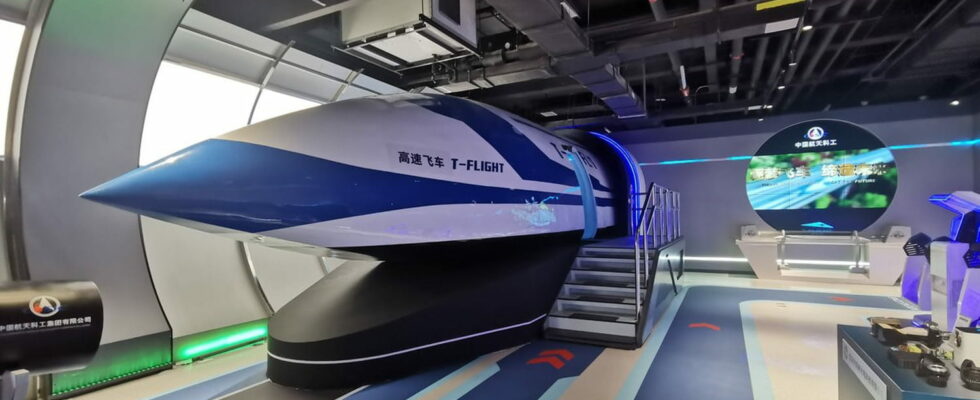Trains as fast as planes? This is what Maglev technology promises, which already makes it possible to exceed 600 km/h and even reach 1000 km/h, the world record!
To face climate change, the train appears to be the preferred means of transport, because it pollutes the least. Problem: It takes way too long to travel very long distances. Also, travelers are forced to rely on the plane. A solution has indeed been considered: Hyperloop. Appeared more than a century ago and popularized in 2013 by Elon Musk – him again! –, it is a magnetic levitation train moving at very high speed. But the project has been stagnating for years – the billionaire’s company, Hyperloop One, even closed at the end of 2023…
But that was before China got involved! In February 2024, the country set the world speed record with the T-Flight, a magnetic levitation train capable of reaching 620 km/h! This is more than our national TGV, whose speed record is 575 km/h, or the Japanese L0 train, which peaks at 603 km/h. The China Aerospace Science and Technology Corporation (CASC) managed to conduct a successful test over a distance of 2 kilometers in Datong. This is quite simply the highest speed ever achieved by a superconducting magnetic levitation vehicle.
The success of the T-Flight is the result of years of research and development, combining CASC’s expertise in areas as diverse as aerospace, missile technology and high-speed vehicle design. It’s all about magnetic levitation. Thanks to a system of magnets, the wagons are held above the rails and propelled through a tube maintained in a near-vacuum state. The absence of friction and the reduction of air resistance allow access to much higher speeds while significantly reducing energy consumption.
Other tests were successfully carried out last August, still on the Datong test section. Although the exact speed reached has not been disclosed, the results obtained are in line with the estimates of the project developers who hope, ultimately, to reach a top speed of 1,000 km/h. More than classic airliners! Another test section, this time 60 kilometers long, is under construction. The final commercial objective would be to connect large cities, to go from Beijing to Shanghai in 1 hour 30 minutes for example.
Several magnetic levitation train lines are already in service in China, but for short journeys, such as Shanghai Pudong Airport. But others, for much longer journeys – up to 2,000 km – are already planned. Thus, it should be possible, one day, to connect Guangzhou and Beijing in 3.5 hours, instead of 7.5 hours with a conventional TGV, and Guangzhou and Shanghai in just 3 hours, instead of 7 hours today. Extensions of these lines are also planned to Macau and Shenzhen. Chinese authorities announce that these trains will travel at a speed of at least 600 km/h.
However, the road to the realization and widespread adoption of Maglev trains is fraught with technical, economic and regulatory challenges. First, the cost of construction is extremely high, even exorbitant. Creating a network of vacuum tubes over long distances requires huge investments in materials, technology and specialized labor.
Additionally, this infrastructure must not only support extreme speeds, but also ensure long-term security and sustainability, which further increases upfront costs. Because with such speeds, the slightest technical failure or incident could have catastrophic consequences. Extremely high security standards are therefore required. In short, it’s not for now!
